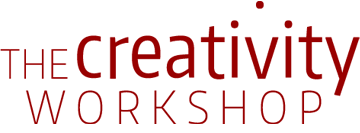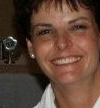The same principle as automatic drawing, only substitute words for images. This can be done in many variations and you should play with what aspects work best for you. Here is one variation we use but we encourage you to experiment!
Come up with one word (your ‘stimulus), the very first word that comes to your mind.
Write it all over the page, many times.
Start to add other words, new words.
For the next 10 minutes write automatically, freely, using the first words that come to mind.
Try to write very fast, without thinking. Do it with your eyes closed.
Go to a fresh page every once and awhile so you don’t write over the words you’ve written.
The key is speed because you are trying to outrun your logical thinking.
This is a great way to get into a completely different world, a world of darkness where new things come to your mind.
10 minutes writing with eyes closed.
Go over what you just wrote, scan through it and find some words or sentences that interest you.
They don’t have to be beautiful; they just need to interest you.
Once you find them, circle them with a colored pencil and write them down on a separate piece of paper.
Take 5 minutes to do this. Eyes open.
Then start writing again automatically for 10 more minutes.
Start this round of writing based on some of those words or sentences you just found and circled from the first round of automatic writing.
You can choose to do it with your eyes open or closed.
Stop after 10 minutes.
Go over what you just wrote and scan for more words, sentences and circle them with a different color pencil and write them down on a separate piece of paper.
Take 5 minutes to do this.
Do 3-4 rounds of this writing. You can choose to use all the circled words together to make a piece of writing—story, poem, character study or even the outline of a project or you can just keep doing the exercise freely until after a week or so of this practice, you see patterns and logic arise.
ABOUT AUTOMATIC WRITING
We like to call this kind of writing ‘jungle writing’.
We first create a jungle of random words. Then, with the words we pull out of that jungle by circling them and copying them on a separate piece of paper, we are making a clear trail through that jungle.
The thing is the jungle is essential to making a path through the tangled bush of language.
This exercise has been a very helpful to people who are afraid of writing or don’t know where to start. It takes away fear.
Just start warming up with words, as if you were a member of an orchestra and you were warming up with your instrument right before the concert.
It will give you a lot of freedom and confidence and also many new and rich ideas.
Working a first draft this way, ideas that hadn’t yet made it to the forefront of your consciousness are now available to you.
Automatic writing is also great for people, such as scholars, who have so much knowledge and information they are overwhelmed by it.
They really need to get the whole mess of it out on paper before they start to select the salient issues.
People who are writing their thesis have found our automatic writing exercise very helpful to get over the paralysis of ‘too much to say.’
This is way you make a preliminary draft in which you don’t worry about precision but bold, inclusive strokes.
You get it all out and then you can go and THEN you can edit from a very concrete manifestation of your knowledge. You may even find ways to include secondary points that enrich your argument in ways that others have never expressed them before. By giving yourself the freedom to write like this,
Automatic writing, like its sister, automatic drawing is a way to discover the ideas and images inside you.
We tend to worry that we will not make sense unless we think, think, think, before committed a single word to paper.
But our brains are hard wired to make sense, to see patterns, so it really doesn’t hurt us to create these jungles of language.
As a matter of fact it gives us more possibilities of the patterns of ideas and images that we might want to manifest.
Sometimes when you write so quickly and freely, you realize: “wow I didn’t know that I thought in so many interesting ways!“
The act of getting these things down on paper and then deciding what’s yes and what’s no for a piece of art or argument can help us see what we are thinking, feeling, knowing.
A lot of time we think about editing as crossing out and diminishing, but very often we edit before we have gotten all of our thoughts out.
Writing automatically is another way of editing that lets the jungle grow in all its fecundity before we trim it to shape a path we can walk upon.
AUTOMATIC WRITING IN GROUPS
Same principals as automatic writing alone but you will do this with 1 or more people. This is kind of automatic writing is a collaborative act. It is a great way for collaborative writing needs, brainstorming, and teamwork.
It is also an excellent way to get kids to cooperate with each other. When you need another person to work with as in this exercise, it reduces the impulse to bully or dismiss your peers. You need them too much to complete the exercise!
In automatic writing in groups of two, you read to your partner.
Now I want you to whisper to each other what you have written. It probably doesn’t make a lot of sense, it’s not thought out nor is it perfect, and while you are reading to each other—here is what I want you to do.
Example of 2 partners doing automatic writing
Shirley will read to Ralph and Ralph, as he listens to Shirley will choose and write down 6 or more of her words or phrases on his paper.
Now once you have taken from your partner six words or phrases, tell your partner to stop reading.
Then you will read your automatic writing to your partner and she will choose 6 or more words or phrases from what you have written. Do this very quickly. You have five minutes to read to each other and choose the phrases you like from each other’s writing.
Do this ‘reading/grabbing words for 5 minutes
Now that you have chosen those words or phrases, write something new that includes the phrases you have stolen.
The writing you now do can be automatic writing or it can be a poem or a story or anything you like, but you must include those words or phrases.
It doesn’t matter where you use them, they don’t have to be central to your new writing but you have to use all of them.
You also should not stop writing once you use them all—keep writing until the 10 minutes is up.
Do it very quickly without thinking.
10 minutes to do the writing then stop
Now read to each other what you have written. As you are reading to each other, the person who is listening needs to write down five or six phrases of your writing like before.
You can even steal back and write down your own words.
You’ll have 5 minutes to read to each other, listen, and steal.
Then start writing again and use what you have just taken from your partner and write for 10 minutes.
Read to each other and steal.
Do the above process for a third time.
This time, forget about being free and nonlinear.
Use the words you have just stolen from your partner to write something, fiction or non-fiction that makes sense.
Read to each other.
ABOUT WRITING IN GROUPS
This is an exercise you can do in groups of 2-4 participants.
In your workshop, we did it rather quickly but you can do for a long time– reading, swapping words, writing some more, ending up with full-blown projects or stories.
It is fun and revealing—it proves that we don’t ever write in a vacuum.
We say we write from our individual sprit, but we are also like big giant sponges and we are soaking up all the images and perspectives that are around us.
This exercise is a way to clarify that.
When we use each other’s words in this way—it is not plagiarism but inspiration—stimulus from outside ourselves.
What’s amazing is how we as writers are transformed when someone transforms our words by putting them in their mouths, through their own life experience and expression.
You can come up with very intense, interesting, exciting things writing and stealing words like this.
There is no reason to always write in isolation.
We can be inspired by each other’s language and so we can help each other expand our own writing imagery and ideas.
This is something you can even do with your family one night instead of watching TV.
It doesn’t have to have an end point in one session of writing either.
If you keep going with this over time, just imagine what kind of writing and ideas might come out of the weave of your unique creativity with that of your partner’s.
You really don’t know what surprises will come from this playful writing!
Suddenly it will seem as if the work you are doing is truly a collaborative act of your melded thinking, dreaming, and writing.
That is a good metaphor for what life is about when we work together creatively and what our interactive journeys in creativity can do to change our thinking patterns and those of our communities.





